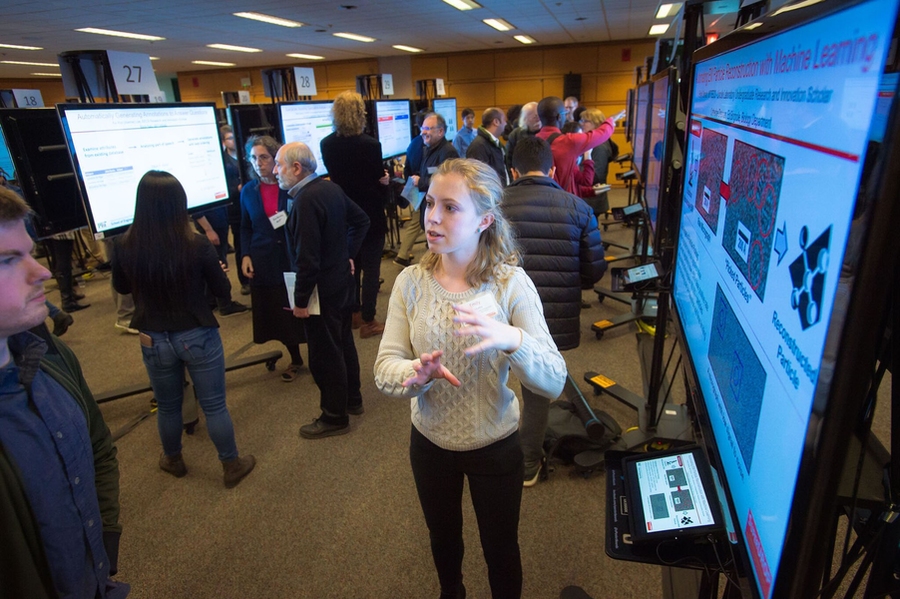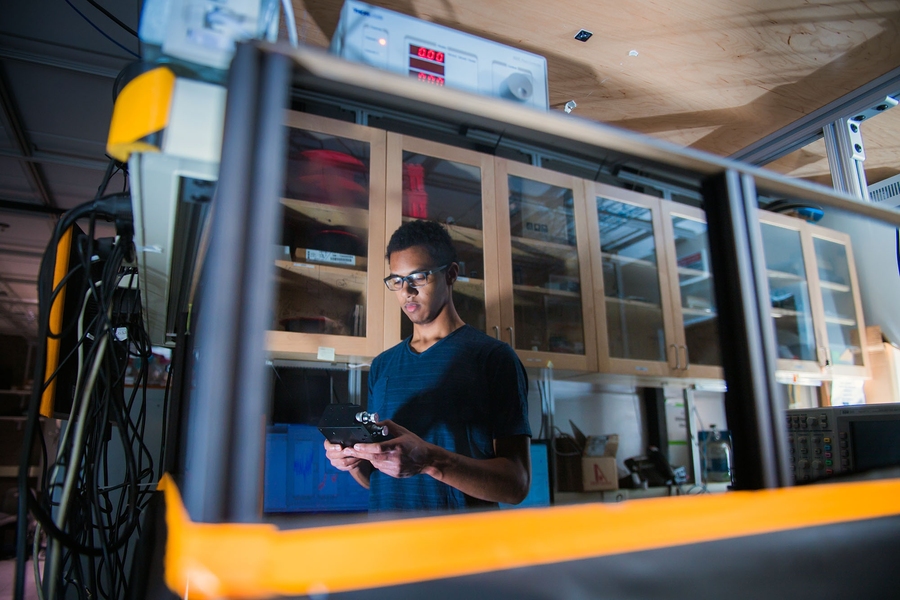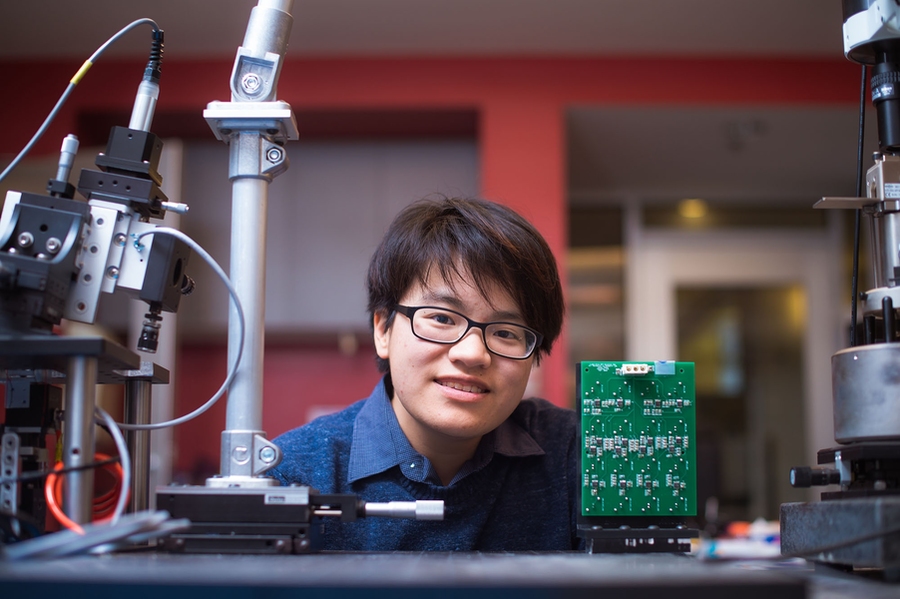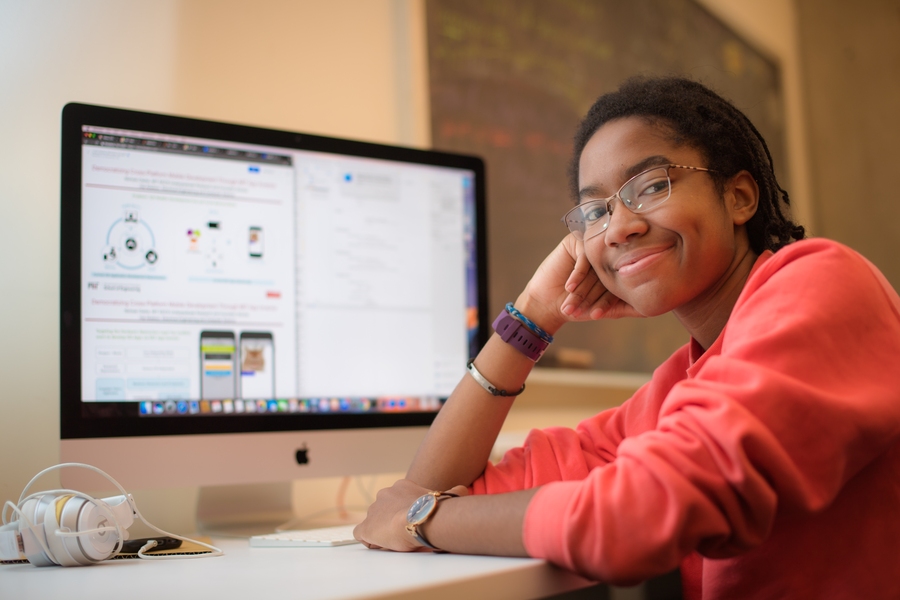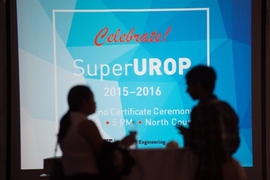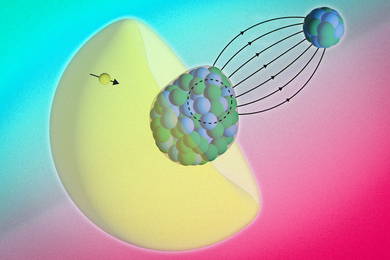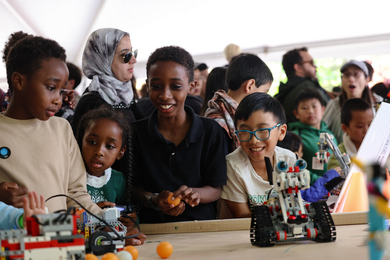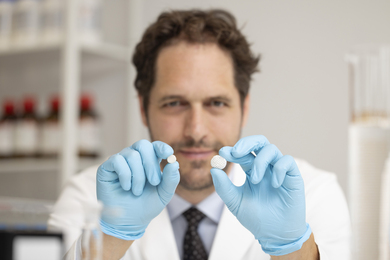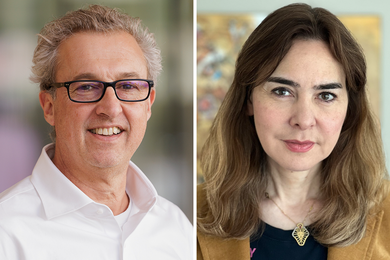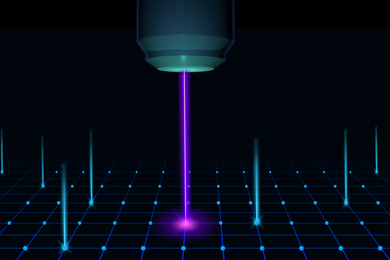Sharon Kipruto knew giving birth was a precarious endeavor. In her home country of Kenya, the maternal death rate is much higher than in the United States — 510 deaths versus 23 deaths, per 100,000 live births. In part, that’s because there aren’t enough doctors to meet patient demand. And without visits, women aren’t getting prenatal information that could potentially save their lives.
Kipruto realized this was a problem ripe for intervention. Instead of relying on doctor visits to disseminate information, she thought: “Why not send the information directly to the women?”
Now she’s working on a project that runs with this idea: sending informative, automated text messages. About 88 percent of people in Kenya have mobile phones, so that could be an effective way to give pregnant women information they need, when they need it, says Kipruto, an senior in the Department of Electrical Engineering and Computer Science (EECS).
Kipruto is among 135 students participating in the 2017-2018 Advanced Undergraduate Research Opportunities Program, better known as SuperUROP. Launched by EECS in 2012, the program was later expanded to all departments in the School of Engineering. This year, for the first time, the program was open to students from the School of Humanities, Arts, and Social Sciences as well.
The SuperUROP scholars’ diverse projects include investigations to improve health, keep people better informed, and make technology more attuned to people's feelings.
“It is remarkable in how many fields the students are contributing,” says Dirk Englund, an associate professor of EECS and instructor of 6.UAR, the 12-unit seminar course that all SuperUROP students take.
Focusing on health
Many student projects focus on approaches to better treat disease. Claire Goul, a junior in EECS, for example, is investigating a tiny biomedical delivery system: DNA nanoparticles. Made of single-stranded DNA, the nanoparticles fold themselves into biological containers, which can transport therapeutic molecules into cells.
Part of maintaining human health is the ability to access and share detailed medical histories. But right now, the process isn’t very streamlined, says Kevin Liu, a senior in mathematics and EECS.
“Health care data is not really in the hands of patients. It's in the hands of doctors, hospitals, and health care insurance companies,” Liu says. “We want to be able to move this data back to patients, and let patients decide whom to share it with.”
To do that, Liu is working with blockchain technology, the system that underlies the celebrated digital currency Bitcoin. What makes the blockchain so useful is that it keeps track of transactions, and when applied to medical records, patients would be able to know who sees their data. An innovative add-on to blockchain code, a feature called smart contracts, would also allow patients to determine whom they want to share data with, as well as who has the ability to update that data. Liu is hoping to build a web interface that makes this technology easy and intuitive to use, even for people who’ve never coded before.
Making information visible
Other students are looking into ways to harness information to benefit society.
Mikayla Murphy, a senior in civil and environmental engineering, is using information to hold people accountable. She’s visualizing data collected by an MIT GOV/LAB-developed machine learning pipeline, which analyzes city government websites to determine whether those governments are being transparent.
There’s reason to look. In 2010, the Los Angeles Times published an exposé on the exorbitant salaries of city administrators of Bell, California (population 38,000). Bell’s city manager was paid a whopping $800,000 per year — the nation’s highest salary for someone in that role, according to the investigation. Murphy says that practices such as publishing city budgets and meeting minutes online can help citizens keep their representatives, and their payrolls, in check.
“I've been really happy working on this project because it's something I've been interested in this entire time here at MIT: how to apply data science skills for social good,” Murphy says.
Jeremy Stroming, a senior in aeronautics and astronautics, is also working toward visualizing a better world — literally. Stroming is building a platform for visually illustrating trends in Earth's subsystems, such as oxygen levels in the oceans, melting sea ice, or changes in average surface temperature.
Stroming’s project aims to find ways to better communicate what’s happening to the Earth so users can, as he says, “have a conversation” with the planet. Not only could people better understand the planet and its systems, especially those going awry, but they could also find out about actions they can take using the platform, Stroming says. These might include recommendations for how to adjust diet, support sustainable businesses, or contact government representatives to advocate for change.
Stroming recognizes that learning about the Earth’s ills can be intimidating. He hopes to make it inviting and empowering. He has been planning a hackathon to make the portal as irresistible as possible, “so that it sucks you in, like Facebook.”
Setting moods with music
With its versatility, technology can also improve our leisure. Patrick Egbuchulam, an EECS senior, wants to enhance video game play by making the music responsive to what a player is experiencing.
Most of the time, video game music is precomposed, fixed, Egbuchulam says. Yet a person could have a totally different experience of the game, with different attendant emotions, from the first time playing to the 10th. Egbuchulam’s project is to make the soundtrack match player experience in real-time. This could include making the music slower and darker for tense, serious moments, or brighter and faster, for exciting, hopeful ones, by changing musical traits such as the melody’s tempo, mode, and key (major or minor key, for example). With this approach, he says, “the music is as unique as a game play.”
As the fall term closed, SuperUROP scholars showcased their work at Proposal Pitch, a poster session, followed by the annual SuperUROP community dinner. There, they heard guest speaker Katie Rae, CEO and managing partner of The Engine, describe the challenges facing startup founders who are developing “tough technologies” — that is, breakthrough concepts that require extensive time and funding to bring to market.
“Tough-tech companies have historically been underserved and underfunded, leaving many breakthrough inventions stuck in the lab,” Rae told the students. The Engine, an MIT-backed startup incubator and accelerator launched in 2016, provides long-term capital, equipment, lab space, and other support for such companies.
SuperUROP participants are only halfway through the year-long program, but organizers say they’ve already come a long way.
“I am deeply impressed about their progress in their research projects and their ability to communicate them,” Englund says.
The scholars return to their labs and classrooms in February.
